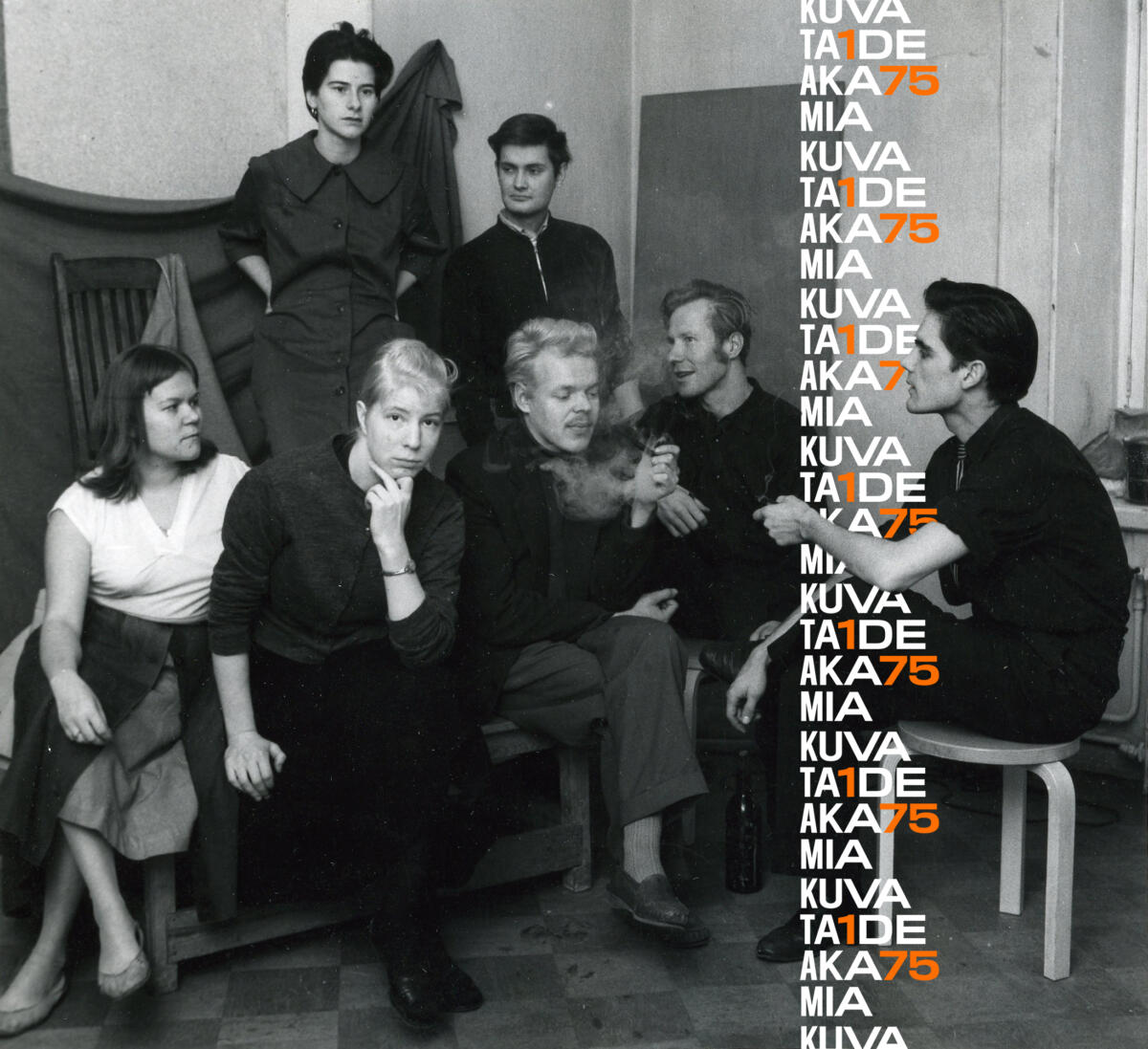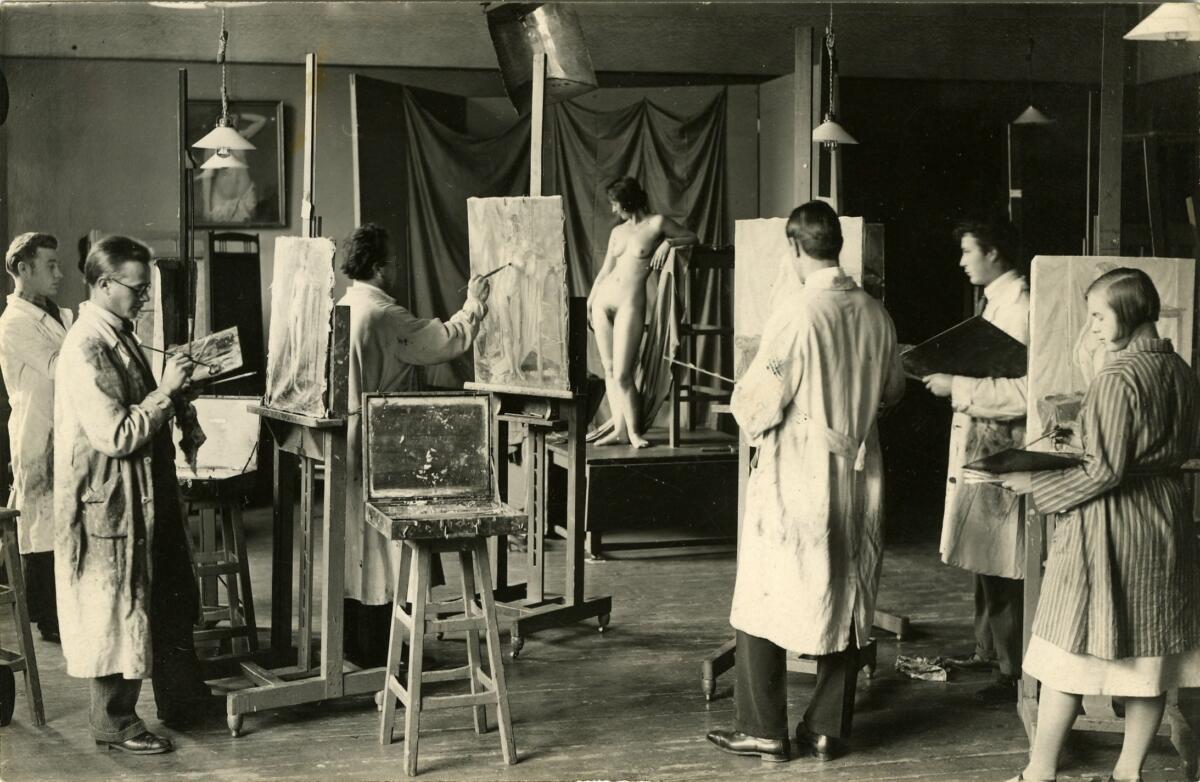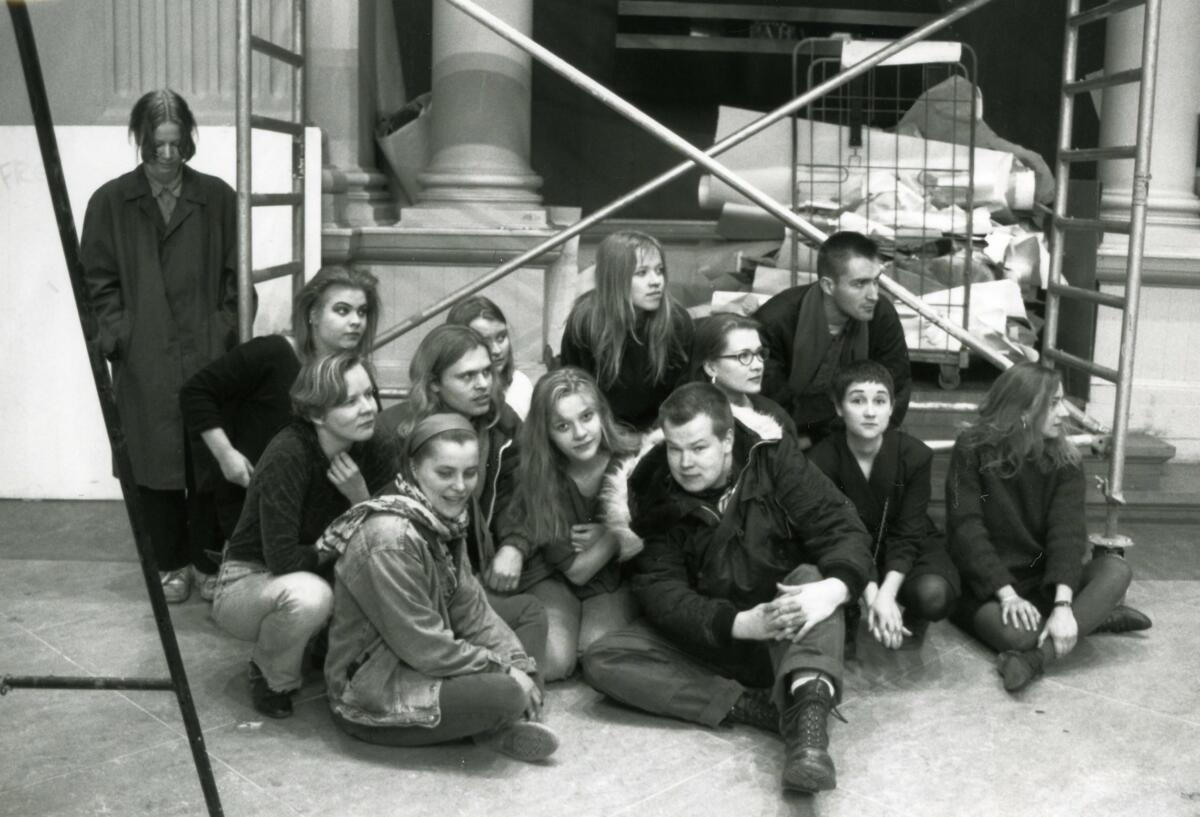Shaping the Finnish mindscape – Riikka Stewen takes the reader on a journey through the history of the 175-year-old Academy of Fine Arts
The Academy of Fine Arts celebrates its 175th anniversary this year. Our Professor Riikka Stewen’s text takes us back to 1848, the early days of the Academy of Fine Arts.

The Academy of Fine Arts through the years
If I were to travel back in time to the 19th century, to the 13th of November in 1848, I would get to attend the very first class offered by the Finnish Art Society’s Drawing School. The weather on that November Monday is quite cold, only a few degrees, and the temperature drops down to six degrees below zero during the night. I walk through the brand-new downtown of Helsinki, with the university, library, senate and the marvellous new church gleaming in the afternoon as I make my way to the Weckström House on the southern esplanade.
Inside the house and in the classroom, I first see a teacher, B.A. Godenhjelm. He has just returned from St. Petersburg, where he is a well-known artist. There are about thirty classmates in the room, young women and men – with men being slightly in the majority. I pay particular attention to Victoria Åberg and Werner Holmberg, as they seem more determined than others, and not surprisingly, they are encouraged to pursue further art studies soon in Europe, in Düsseldorf.
***
The history of the Academy of Fine Arts began when Finnish Art Society’s Drawing School was founded. The Art Society was one of the trendiest think tanks of its time, and its most important mission was to create favourable conditions for the art scene in Finland. It utilised a variety of means to fulfil this mission, and one of them was tending to the budding artists – as was the phrase, or the mantra back then. The eloquent secretary of the association, Zacharias Topelius never grew tired of advocating for art and young artists.
The Art Society can be considered to have succeeded in its mission. Out of the first students of autumn 1848, Victoria Åberg worked as an artist not only in Finland, but also in Germany and Italy, while Werner Holmberg created the imagery of the Finnish landscape in mid-1800s over a few short years. We are used to perceiving the features of landscapes through Holmberg’s gaze. It would be impossible to imagine the Finnish mindscape without the students that studied at the Art Society’s Drawing School later in the 1800s: Helene Schjerfbeck, Albert Edelfelt, Pekka Halonen, Akseli Gallén-Kallela, Ellen Thesleff. Helene Schjerfbeck also taught at the Drawing School in the 1890s, as did Elin Danielson – women still had a significant role in the art scene at the turn of the century.
If I were to continue time travelling, I might stop by at the school in the early 1900s to witness how female students were protesting against how they were denied the opportunity to take classes with a nude model due to the existing moral standards. A few decades later, I would sit down next to Tove Jansson to see how she used a few simple lines to comment on world politics in her drawings during the turbulent years of the World War II. And I would definitely like to dance in student parties with her.

I could travel to various layers of time, but in the present moment, it is interesting to think what kinds of temporal moments and concepts of art the Academy of Fine Arts encompasses. According to Juhana Blomstedt, the academy’s rector in the 1980s, an art academy consists of various different concepts of art and multifarious temporalities. For him, the academy’s institutional form meant a reservoir of moments and eras, where each upcoming artist could freely draw from. Art historian Daniel Arasse had the same thought process when he emphasised that the dialogue between artists does not acknowledge the one-way flow of time, and is fundamentally multi-temporal, anachronistic and based on an experience of a shared sense of material, a question or a theme: a modern-day artist can find their kindred spirit from years back and at the same, have trust in the fact that their own works will be linked to the continuum of the discourse – no matter how critical or revolutionary they may be.
Institutions, much like architecture, arrange and structure our experience of not only space but of time, too. Compared to the geological age or the Anthropocene of the earth, 175 years is not all that much, but it still exceeds many living experiences of time. Therefore, the Academy of Fine Arts is also a space for time and memory, a mnemonic construct, and in a way, it holds knowledge of perceiving and depicting the world over a span of tens of thousands of years – the building that was completed a few years ago on Sörnäisten rantatie retains sensations of pigments and binders, space and shape and bodily senses as well as choreographies of movement dating back to the Palaeolithic Age.
Ultimately, I’m time travelling through a multitude of moments inside of other moments folding into each other when I simply open the door to the Academy of Fine Arts. I can travel to the past, but also to the future. In today’s Academy of Fine Arts, students from various parts of Finland and the globe reflect on things that matter to them and how they see the world in their works. They explore the most varied techniques, motifs and themes – with their works resulting in a continuously-evolving kaleidoscope image of the present. Artists have been called shamans, anthropologists, mystics and revolutionists, but first and foremost, their works outline what is going on in the world. In their works, we can see the future – or, rather, the future alternatives that depend on our choices – taking shape.

Anniversary celebrations: the exhibition Hommage à Lauri Anttila and a website presenting the Academy of Fine Arts art collection
An exhibition honouring the teaching work of Lauri Anttila (1938—2022), a long-time rector and professor of the Academy of Fine Arts, will open at the end of November at the Kuva/Tila gallery.
In his works, Lauri Anttila often referred to the legacy of the past influencing the present time. He was a pioneer in artistic research, a reformer of art and artist education, and an esteemed and well-liked teacher. The exhibition explores the impact that Anttila’s work has had on the works of his students and younger artist generations. Featured invited artists include Anttila’s students from various decades and artists who carry on the spirit of his art.
The website presenting the Academy of Fine Arts art collection will also go live this autumn. The Academy of Fine Arts art collection consists of over 300 works of art, as well as a collection of several hundred printmaking works. The oldest dated works are from 1889. The art collection consists mostly of works by students of the Academy of Fine Arts, providing a versatile cross section of the history of Finnish art teaching and the field of fine arts all the way from the 19th century to the present day.